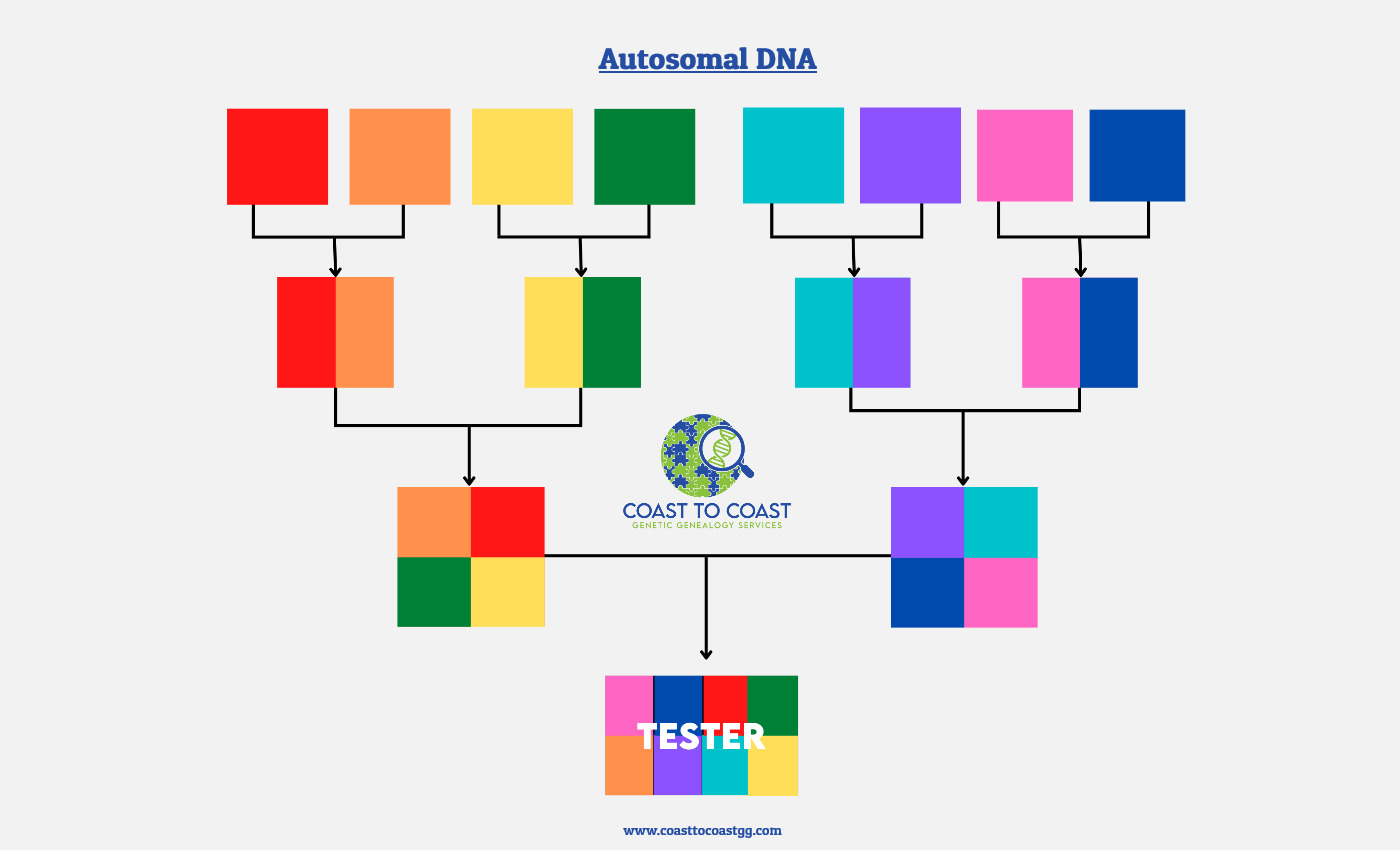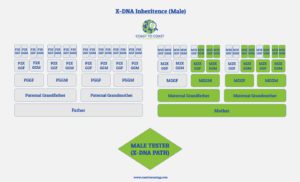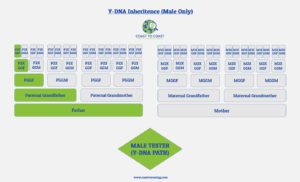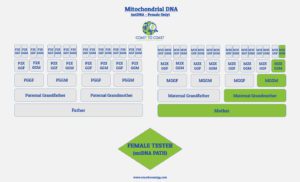What types of DNA are used by investigative genetic genealogists to identify a person of interest in a criminal case or unidentified remains? The one that usually comes to mind is autosomal DNA, which is what most direct-to-consumer testing companies test. However, other lesser-known types of DNA can be beneficial in resolving a case more quickly. Below, we’ll go over the different types of DNA and how they can be helpful in our research.
Autosomal DNA
Autosomal DNA is inherited from both parents and represents the 22 autosomal chromosomes and one pair of sex chromosomes (X &Y). It tests over 100,000 markers (SNPs) and can be used to trace a family tree back six to eight generations or 150 to 200 years. It’s the most common type of DNA used in Investigative Genetic Genealogy and has led to hundreds of identifications.
X-DNA
Due to the unique inheritance patterns of X-DNA, it can be beneficial in some cases. If a person is born with an XY chromosome (genotypic male), X-DNA is only inherited from his mother, and he can only pass X-DNA down to his daughters, not his sons. On the other hand, if a person is born with an XX chromosome (genotypic female), it can be inherited from both parents and passed down to all her children.
For example, in the case of a male suspect and a male DNA match, if they share X-DNA, they can only be related through their maternal lines. That would rule out 50% of each family tree, saving a lot of time and research. However, if it’s a female suspect and a male match, they can only be connected through the male’s maternal line – which would narrow our common ancestor focus to the match’s maternal side. It isn’t as helpful with two females, but it can still rule out both of their paternal grandfather’s lines, saving hours of potential research.
Y-DNA
Y-DNA is passed from father to son and can be used to trace the surname line. While Autosomal is the preferred option, Y-DNA may be the only option in some cases (such as mixed samples).
One of the earliest applications of Y-DNA is that of Phoenix’s “Canal Killer.” Dr. Colleen Fitzpatrick used Y-DNA analysis to hone in on the surname Miller which helped lead to the arrest of Bryan Patrick Miller in January 2015.
Mitochondrial DNA (mtDNA)
Mitochondrial DNA (mtDNA) is passed down the maternal line from mother to daughter. The mitochondrial haplogroup is useful because investigative genetic genealogists can use it to rule out or eliminate downlines and suspects but cannot be used to rule IN a suspect or downline as many in a population share the same haplogroup.
As you can see, many different types of DNA are used, each with its purpose. While they may not all play a part in every case, using DNA other than autosomal has been the key to honing in on a family group or person of interest in many cases.





